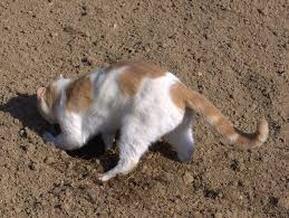 3 Interesting Facts about Cat Litter: 1. Businessman and entrepreneur Ed Lowe invented and trademarked Kitty Litter® in 1948 as the first commercially marketed cat litter. In that time the most popular litter pan materials were sand and fireplace ashes. 2. Cat waste can contain a nasty parasite called Toxoplasma which can cause some serious health problems to humans. Wastewater treatment systems are primarily designed to handle human waste and aren’t designed to handle things like Toxoplasma. Unfortunately, wastewater treatment systems don’t remove this parasite from the water before it is discharged back into the environment. The harm can also extend into waterways and marine ecosystems affecting fish, shellfish, otters, and other marine life 3. To avoid being eaten or attacked by predators, ancestral cats had to cover up their tracks. The smarter cats gravitated toward soft dirt or sand, since their granular consistency made it easier to bury their waste. This is why cats are naturally attracted to the feel of cat litter and know what to do once they feel it beneath their paws. 3 Recommended Qualities for cat litter?
3 of the main cat litters we have experienced - Pros & Cons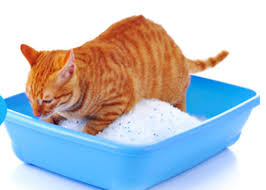 Crystal Cat litter Crystal Cat litter is made up of Silica gel which is composed of silica dioxide sand, oxygen and water. The gel is made up of tiny pores that absorb 40 times their weight in liquid. Most of us recognize silica gel as those little “dessicant—do not eat” packets that come with medications, cameras, shoes and other items that could be damaged by moisture buildup. Pros
 Biodegradable Litters In the US it is considered that there are nearly 75 million cats and up to 150,000 tons of cat litter that end up in landfills every year. For this reason alone it may be worth considering biodegradable cat litter as an option for your cat. Biodegradable litters come in different forms: wheat, corn, walnut and paper. The ones most often seen through our Barcelona pet sitting experience are the clumping and non clumping corn varieties. Pros
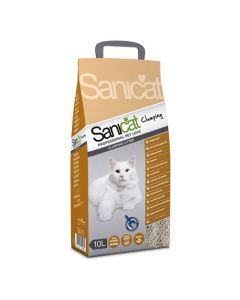 Clay litter Clay litter is composed of absorbent, diverse clay minerals called "fuller's earth." Fuller's earth is any non-plastic clay or clay material that can be used to filter, decolorize and absorb liquids and spills. It has been popular for decades and has the innate ability to absorb its own weight in water. Pros: It will effectively absorb moisture as well as provide some odor control through absorption.
Clumping litter is also a clay-based litter, but the main ingredient, sodium bentonite, acts as a clumping agent, absorbing urine and turning it into tight, solid clumps that can be easily removed from the litter box and disposed of. Pros:
3 things to help you to choose a scoop As pet sitters, scooping litter efficiently is all about the right scoop!
Conclusion
References
www.petsit.com/pick-of-the-litter https://www.huffpost.com/entry/ www.vetinfo.com/pros-cons-crystal-cat-litter.html www.moneycrashers.com/best-natural-cat-litter-reviews/ https://www.consumersearch.com/cat-litter/best-biodegradable-cat-litter https://flohawks.com/do-not-flush-cat-poop-down-your-toilet/ https://www.litter-robot.com/blog/2015/06/30/why-do-cats-use-litter-boxes/
4 Comments
The Gos d'Atura, Perro de Pastor Catalan or Catalan Sheepdog are an ancient and rare breed of herding dog that developed in Catalonia, during the establishment of the Roman Empire. The breed was officially recognised in Catalonia in 1929, but, is also bred in Germany, Finland and Sweden. Catalan Sheepdogs are high spirited and cheerful; are well known for being able to do the 'doggy dance'; are highly intelligent, often used by the police and security agents; an agile breed that excels in dog sports and extremely loyal to their human owners. What do they look like? They sporting full beards and mustaches that give them a funny look. They have an intense intelligent and alert expression with expressive deep amber coloured button shaped eyes and long straight hair. They can be brown, black or cream in colour. 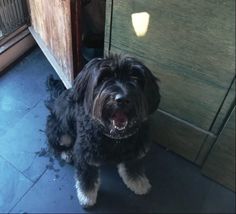 History & Development The Catalan Sheepdog developed during the time when the Roman Empire began to flourish between 200 and 100 BC. The livestock guard dogs, that the Romans brought with them were crossed with the local Catalan dogs, thus developing the first line of the Catalan Sheepdog breed. When the Roman conquerors arrived in the Iberian Peninsula around 200 to 100 B.C. they brought with them two types of dogs. One breed was used to defend and protect the Roman quarters, to tend their flocks of sheep as well as to help in attacking the enemies. The other breed, a dog with a lighter build was used to herd cattle. These dogs that are thought to be the ancestors of the Italian Bergamasco were mated with the native Catalan dogs to give the Catalan Sheepdog of today. Gradually, these dogs spread all across Europe and became particularly popular in the Catalonia region. During the civil war in Spain, the dogs were often used to carry messages between command centres. They were also used as guard dogs. Driving and tending the flock is the true calling of a Catalan Sheepdog. These dogs have a natural instinct of caring for the flock. A Catalan Sheepdog would amiably perform the commands of the shepherd but in most instances the dog will act on its own, making its own decisions concerning the monitoring of the flock. This hardworking breed has been the able and irreplaceable supporter of shepherds for hundreds of years, vigilant and courageous and well able to protect the flock entrusted to its care. After the 2nd World War, the dog’s population dramatically declined. Some specimens were destroyed, others were rarely bred. Demographic movement is considered to be the major cause of population decline. During the 1950s and 1960s, a lot of farms were closed when people from the countryside moved into towns. Demand for the breed dwindled, the dogs fell into disuse. In 1970 a group of breeders worked together to regenerate the breed. Remaining specimens were found and bought from the shepherds and intensive breeding was begun. Today the breed is still considered to be rare but thanks to the dedicated breeders, the population is slowly but surely growing. 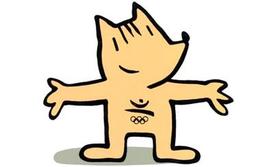 Catalan Sheepdog Personalities Cobi, the Catalan Sheepdog, was the official mascot of the 1992 Barcelona Olympics. Coby represents a Catalan Sheepdog in Cubist style inspired by the interpretations from Picasso of a masterpiece from Velazquez, Las Meninas. Cobi was designed by Javier Mariscal and he was unveiled to the public in 1987. His name was derived from the Barcelona Olympic Organising Committee (COOB). Before and during the Games, Cobi was shown in a variety of advertisements for Olympic sponsors such as Coca-Cola, Brother Industries and Danone. He even had his own anime television series, The Cobi Troupe. He also appeared on an extensive range of souvenirs, dubbed Cobiana. During the Games an inflatable Cobi was tethered to the Barcelona waterfront. Other famous Catalan Sheepdog personalities Einstein and Copernicus from the movie 'Back to the Future' are Catalan Sheepdogs. 'Back to the Future' tells the story of Marty McFly and the scientist Dr. Emmett Brown, or commonly referred to as “Doc” and how they travel back in time to alter their history and return in 1985. Einstein (also called Einie) and Copernicus were the Doc’s pet Catalan Sheepdogs. However, it was Einstein who had a bigger role to play in the film. |
Sign up for our newsletter
Archives
June 2020
Categories |

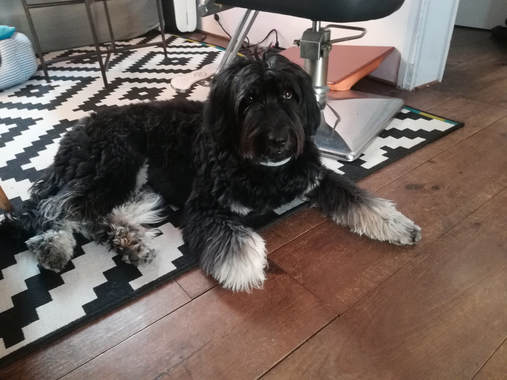
 RSS Feed
RSS Feed